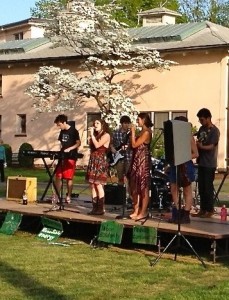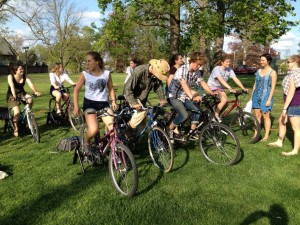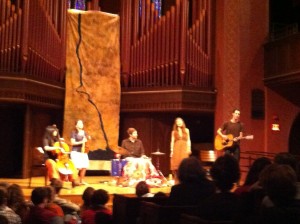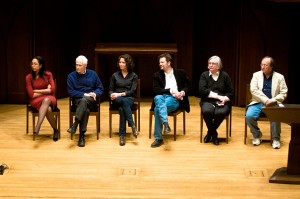In the last week I attended two meetings worth travelling to. The first (in Washington D.C.) dealt with the intellectual-financial challenges facing American higher education, and the second (in Princeton) examined the role of the humanities in the public sphere. I was in Washington for a meeting of the Association of American Colleges and Universities, on whose board I now serve. We began with a very interesting talk by environmental scientist James P. Collins of Arizona State University. Jim talked about the changing face of scholarly inquiry today, when pressing questions just aren’t fitting into distinct disciplinary borders. His particular interest is in the intersection of biological, geological and social sciences, and we were asked to consider synthetic biology, restoration ecology and how engineering and “big data” analysis could be added to the mix. I thought of how Wesleyan’s College of the Environment is also working in this sphere under Barry Chernoff’s direction, and how Lisa Dierker’s work in the Quantitative Analysis Center also blurs the boundaries among disciplines in powerfully productive ways.
In Princeton I was part of a conference that focused on the “ethics of reading.” Peter Brooks, the organizer of this great gathering, asked speakers to consider how the ways we are taught to read in the humanities might foster modes of attention that have positive impact on the public sphere. To whom or to what are we responsible when we learn to read well? How is the exercise of the imagination in reading a narrative related to empathy, and to the desire to reduce harm to others? Literary critic Elaine Scarry gave a powerful presentation on how increases in literacy might be linked to efforts to reduce violence, and she returned to her theme of how the pleasures of beauty might create “opiated adjacencies.” By this she means that the pleasure we take in beauty might stimulate us to make the world more fair, more just. Yale law Professor Paul Kahn talked about teaching humility when we cultivate wonder in the classroom. The practice of creativity and interpretation give us an experience of freedom. Philosopher Kwame Anthony Appiah noted that when we betray that practice, it is less a betrayal of an author than a betrayal of our community.
I’m more skeptical about the positive “adjacencies” to aesthetic delight than are some of my colleagues, but the conference gave me much to think about. I am convinced that work in the increasingly blurry disciplines of the sciences, arts, humanities and social sciences provides us with an increased ability to navigate within contexts of ambiguity and change. As I noted in a recent blogpost, “liberal learning can help our students unplug from the inputs they have customized to reinforce their own tastes, expectations and identities. We get to introduce them to stories and poems, historical events and paintings, scientific experiments and political debates that they might not have attended to, even googled, on their own. And then we get to learn with them about how these complex cultural artifacts can be understood in relation to our present. In this way, we develop a richer sense than our little devices can give us of who we are. More important, we develop a deeper sense of who we might become.”
A Wesleyan education helps us develop this deeper sense of who we might become. Happily, this occurs in a context of supportive community in which the treasures of continuity find their balance with the pleasures of change.







